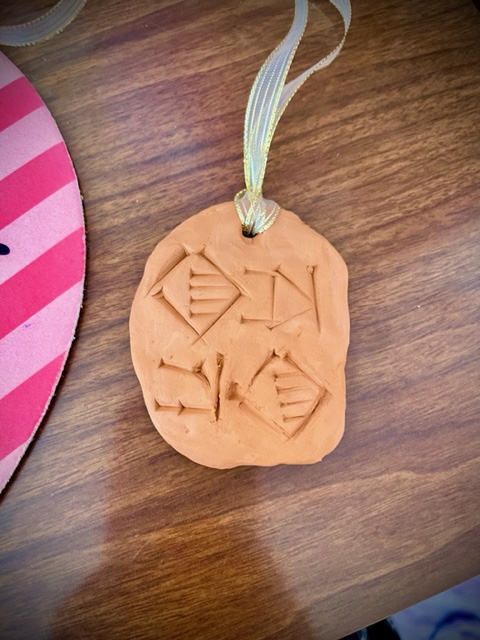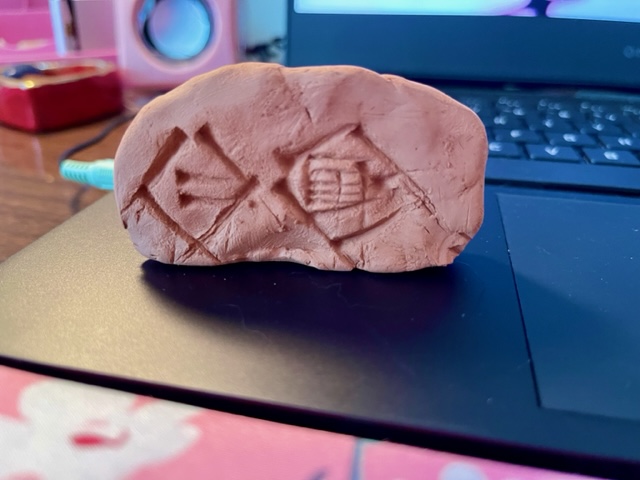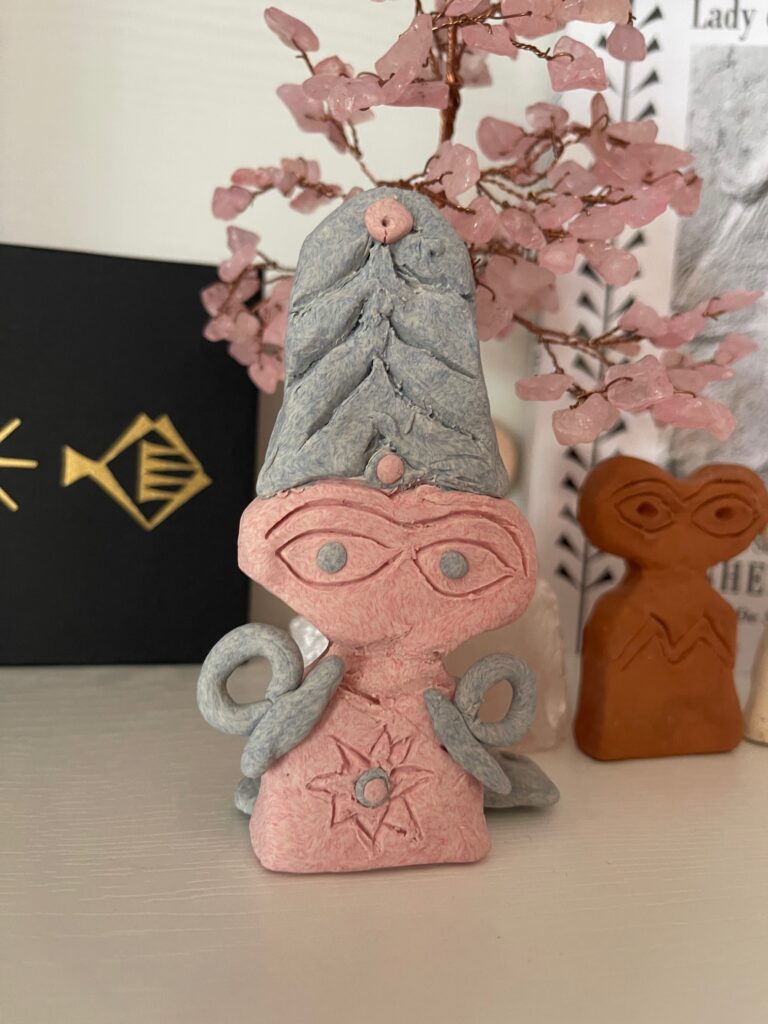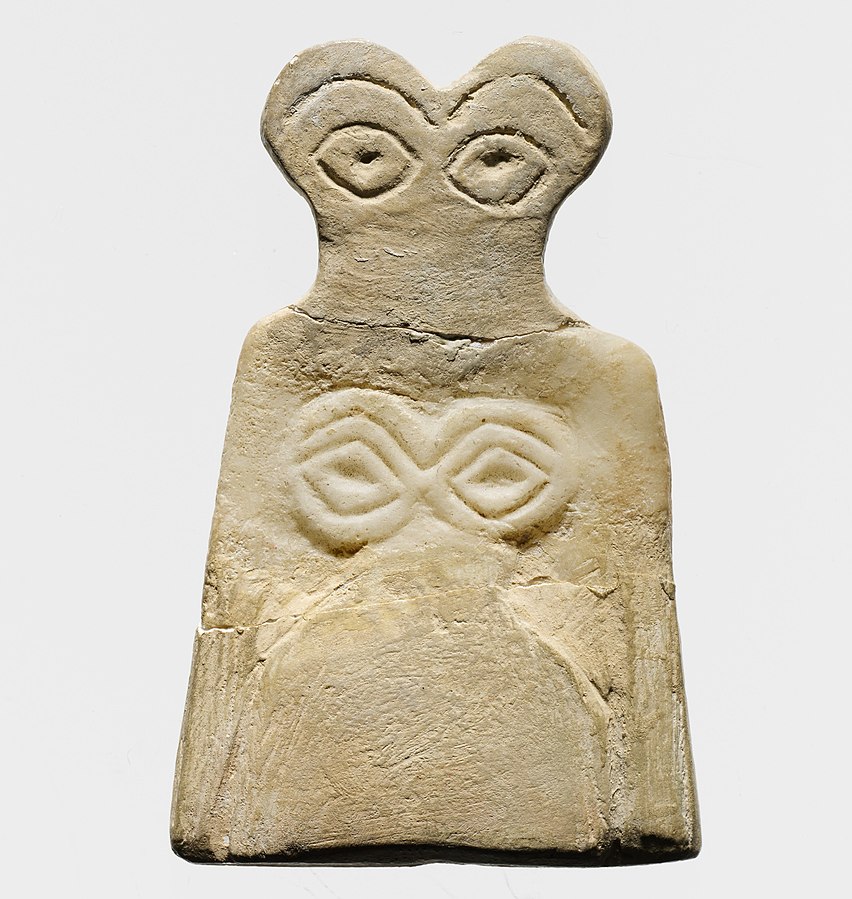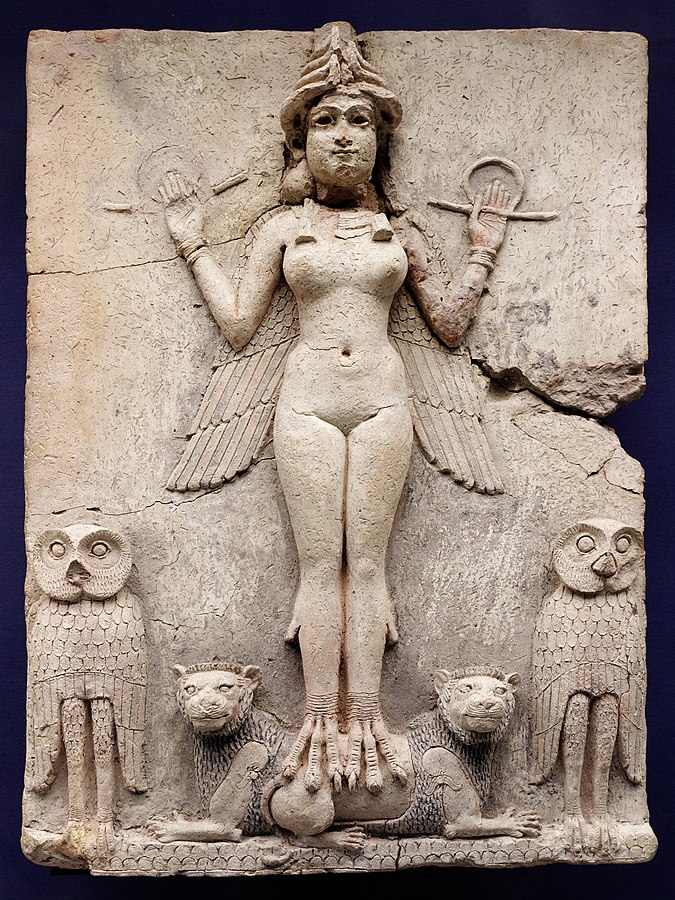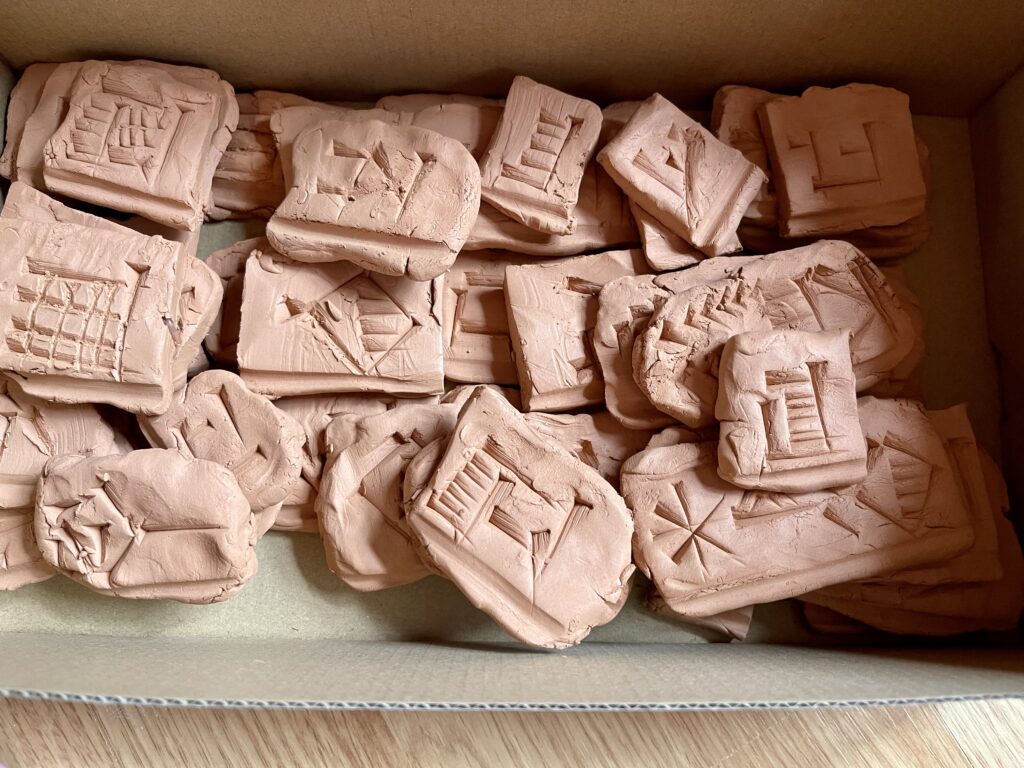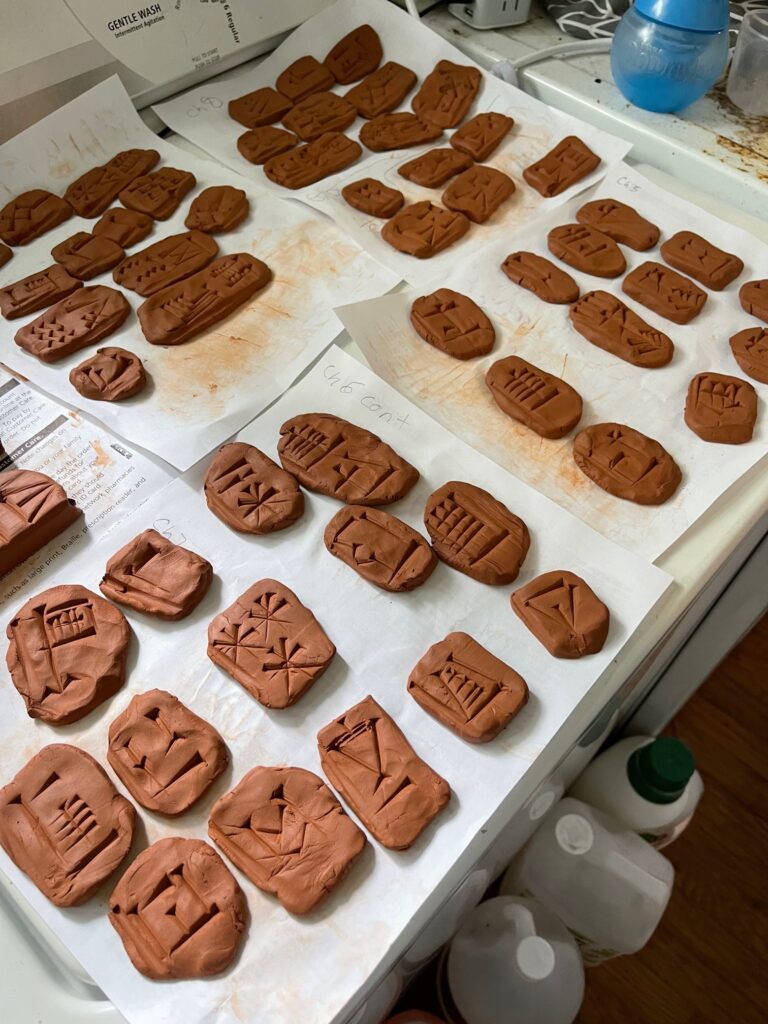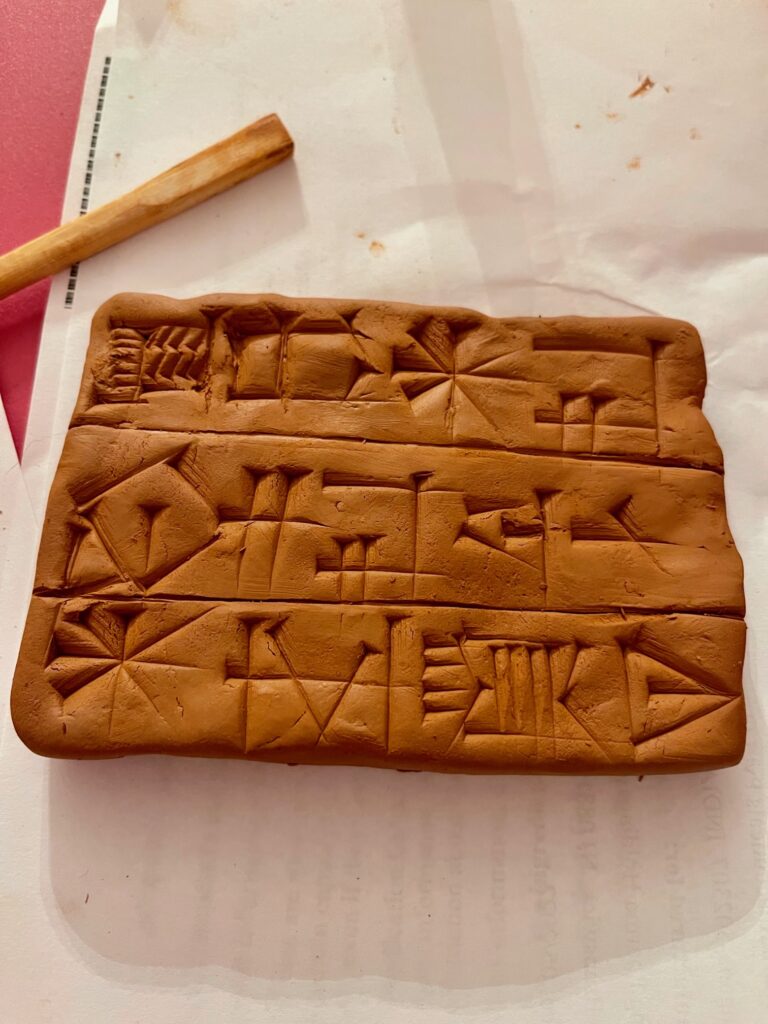
I made this tablet last Friday in the middle of the night when I couldn’t sleep. Translated to English it says: “The strength of my god completes my own. Inanna zami.”
The first part is a Sumerian proverb. There is some debate over the authenticity of this quote, but it is listed in the CDLI. Besides, I like the quote.
usu diĝir-ĝa2 ni2-ĝa2 ba-til
𒀉𒄨𒀭𒂷𒉎𒂷𒁀 𒌀
The second part, Inanna Zami, means “Inanna be praised.”
𒀭𒈹𒍠𒊩
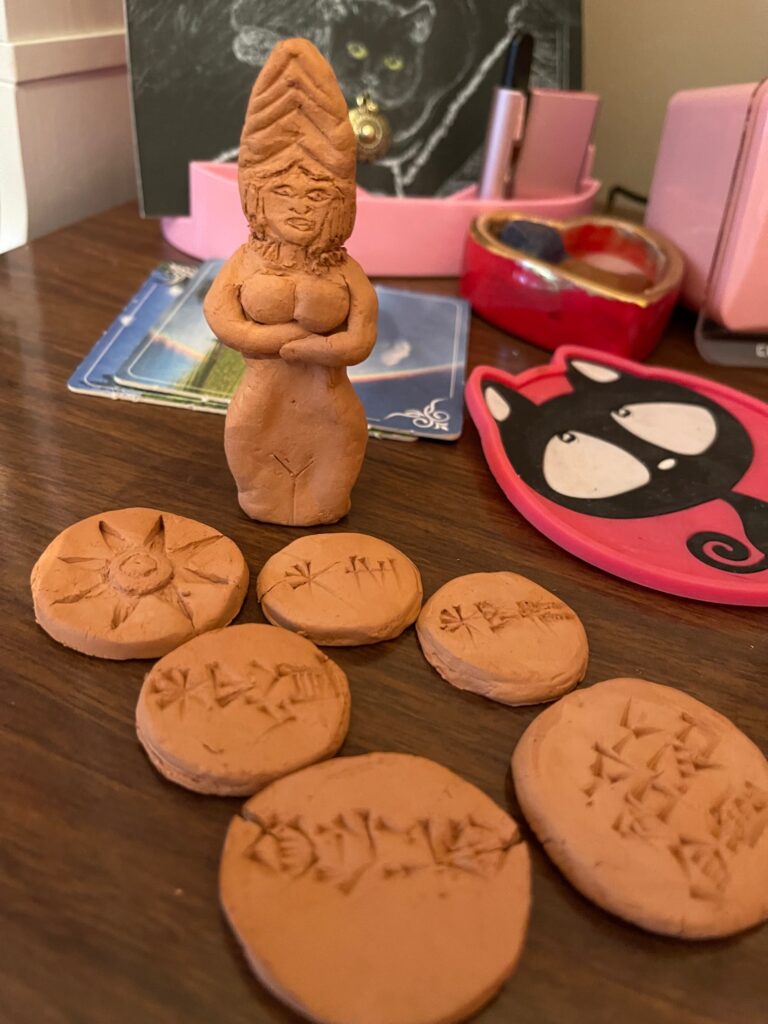
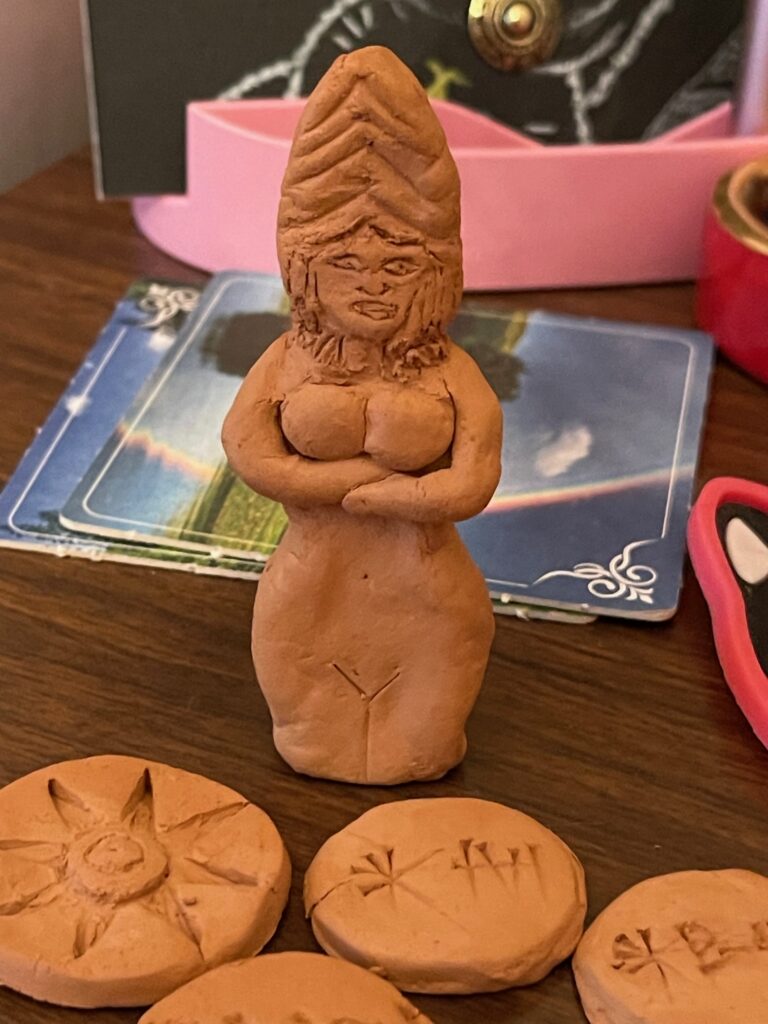
Then on Sunday I made a new cuneiform stylus to make smaller wedges and tried it out by making these tiny clay tokens. I made ones featuring the names of Inanna, Ninshubur, and Dumuzi. I also made a smaller version of the “Go Away” amulet that I made earlier and one that translates to “Live, Laugh, Love” for funsies. I made the new stylus from one of those sticks that comes with poly-fil stuffing and squared it off on the end. Well, it’s more of a triangle than a square.
Then I made a similarly-sized token featuring Inanna’s star to test out my new set of clay carving tools. After making all of these simple projects I felt like trying my hand at sculpting something more complex. I decided to make a small pocket-sized figurine of Inanna for a travel altar. I wanted something small and simple to practice sculpting. I posed Her arms crossed against Her body so they wouldn’t be broken as easily during travel, but She kinda just looks like She’s done with my shit, so I feel like I should carry this representation of Her with me when I know I’m about to make poor decisions.
I already want to make a larger similar statue with more details representing more of Her iconography, including Her 8-point star, and the rod and ring symbol that frequently appears in images of deities in Mesopotamian art.
